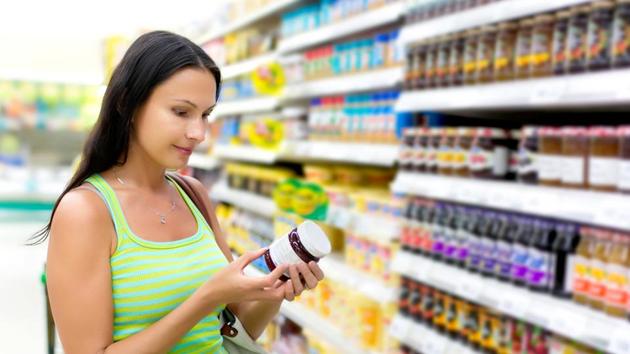Sugar-free, low-fat claims could be misleading. Here’s how to decode food labels.
Products high in calories, salt, sugar or fat are more likely to make low- or no-content claims. To make healthy choices, look for what a product contains rather than what it doesn’t.
No-fat or no-sugar, low-fat, low-cholesterol or reduced-salt on food packaging may make you feel you are making healthy choices, but the claims rarely reflect the actual nutritional quality of the food, shows a new study in the Journal of the Academy of Nutrition and Dietetics.

“In many cases, foods containing low-sugar, low-fat or low-salt claims had a worse nutritional profile than those without claims,” explained lead investigator Lindsey Smith Taillie, a research assistant professor in the department of nutrition at the University of North Carolina at Chapel Hill.
The study, which looked at data from more than 80 million food and beverage purchases in the US over five years, found that 13% of food and 35% of beverage purchases had a low-content claim (including no, free, low or reduced) and that low-fat was the most common claim, followed by low-calorie, low-sugar and low-sodium. “Products high in calories, sodium, sugar or fat may be more likely to have low- or no-content claims,” said Taillie.
It’s all relative
You assume reduced means a healthier product, but what the label means is that product has reduced amounts of an ingredient in reference to the original product. For example, a three-cookie serving of reduced-fat Oreos contains 4.5 grams of fat compared to 7 grams in a serving of full-fat Oreos, but both contain 14 grams of sugar per serving, which doesn’t make the low-fat version is “healthy.”
Chocolate low-fat milk may have lower fat content but it is higher in sugar relative to plain milk and higher in sugar and fat relative to other drinks.
Portions matter
Foods with a “low” claim are equally confusing, but for different reasons. The FDA allows a low-fat label on food if that food has less than three grams per reference amount customarily consumed (RACC), which varies across product categories. For example, the RACC for brownies is 40 grams, whereas the RACC for cheesecake is 125 grams.
“A low-fat brownie could have three grams of fat per 40 grams, whereas a low-fat cheesecake” would have to have three grams of fat per 125 grams. So if a consumer were trying to find a lower-fat option for a dessert, the low-fat brownie would have relatively higher fat than the low-fat cheesecake.”
Food labels: Reading between the lines
What it says: Contains no sugar or artificial sweeteners
What it means: Contains no sucrose, but could have fructose, dextrose, dextrine, malitol and high fructose corn syrup
What it should say: Contains no added natural or artificial sweeteners
What it says: Cholesterol free
What it means: Has no cholesterol but may be full of artery blocking trans fats and calorie-dense fats
What it should say: Should specify type of fats, including levels of trans fats
What it says: Low fat, low sugar, low salt
What it means: Amount of unhealthy ingredient is lower relative to the original product.
What it should say: Should specify among of sugar, fat and salt
What it says: Edible oil/ vegetable oil/ partially hydrogenated oil or fats
What it means: All are euphemisms for trans fats, which contribute to ‘bad’ cholesterol and lowers cholesterol
What it say: Contains trans fat or tans fatty acids; must mention source of oil
What it says: 100 percent natural
What it means: It may be high in sugar, sodium and fats, including trans fats; may even have permissible artificial colouring and preservatives
What it should say: Organic, but only with certification
Follow @htlifeandstyle for more.
Catch your daily dose of Fashion, Health, Festivals, Travel, Relationship, Recipe and all the other Latest Lifestyle News on Hindustan Times Website and APPs.




